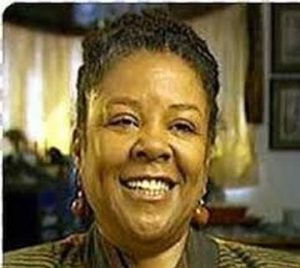 By Ramona Edelin Special to the AFRO
By Ramona Edelin Special to the AFRO
It is 50 years since the Detroit riot, which followed a police raid on an unlicensed bar in 1967. The intensity of that event was surpassed previously only by the 1863 New York City draft riots during the Civil War, and subsequently by the 1992 Los Angeles riots. By the time it ended, 43 people were dead and over 1,000 injured. The 82nd and 101st Airborne Divisions and the National Guard were deployed. At least 2,000 buildings were destroyed in a neighborhood that, half a century later, remains largely a wasteland.
The chaos, violence and brutality erupted in a city of multiple ills, with discrimination in policing, housing and employment rife; the quality of public education incredibly poor; and limited access to medical services. The riot erupted in one of the most neglected neighborhoods, in one of the nation’s most segregated cities—and little changed as Detroit continued its decline in the 50 years that followed. The city’s traditional public school system—which could and should have been a great equalizer, helping erase other injustices—has been dubbed the worst in the nation.
Today, as in many other cities where the public education system all but collapsed, public charter schools, which operate independently of the traditional school system, educate a large share of students enrolled in public schools. Taxpayer-funded and tuition-free—like traditional public schools—public charter schools may determine their own school curriculum and culture, while being held accountable for improved student performance by their authorizer, which can demand changes and even close campuses.

[/media-credit] Dr. Ramona Edelin is executive director of the D.C. Association of Chartered Public Schools.
Proficiency as measured by standardized test scores is better than at its nadir, but still far from satisfactory. There are some bright points, however. Charters have helped raise student proficiency. Of those public school students who took standardized tests in school year 2015-2016, 50 percent were enrolled in charters—but 61 percent of those who scored as “proficient” were charter students, according to the National Alliance for Public Charter Schools. And nearly half of charter students significantly outperform their Detroit Public Schools counterparts, Stanford University’s Center for Research and Education found.
With 53 percent of public school students enrolled in charters, Detroit has followed a similar path to the nation’s capital, which has a 46 percent charter school share. Only Katrina-hit New Orleans at 92 percent is higher among large cities. Washington, D.C. had similar problems with its public school system, as well as many of the same economic and social issues. Washington also began to innovate in its public schools with charters in the mid-1990s, amid a traditional system that, like Detroit, was seriously in decline academically, organizationally dysfunctional and dangerous to student safety.
If anything, the charter and other education reforms introduced in the District of Columbia have produced even more significant gains for the public education offering in the city as a whole.
Before the charter reform, half the public school students dropped out before graduating. Last year, the on-time—within four years—high-school graduation rate was 73 percent for charters, and 69 percent for DCPS, lower than the national rate, but fast catching up.
Standardized test scores also significantly improved at both charters and DCPS, with the strongest gains in the most underserved neighborhoods—not at the expense of a varied and diverse curriculum, but alongside one.
As public schools of choice, charters have brought options to families who pre-reform would have lacked the means to access alternatives to substandard schooling—especially important in a city where three in four public school children are economically-disadvantaged and half are defined as “at risk.”
The demand for these unique public schools is such that nearly 10,000 students are on waiting lists to attend one or more charter campuses in the school year about to begin. Demand for traditional public schools in the out-of-boundary program also has increased. And parental choice has been simplified by DCPS and D.C. charter participation in the common lottery, which allocates places when schools’ popularity causes them to be over-subscribed.
Charters’ success also has catalyzed improvements in the traditional public school system, following the introduction of mayoral-control of DCPS and the appointment of three reforming School Chancellors.
From Detroit, Washington, D.C. and New Orleans to the 13 other urban school districts where the charter share is above 30 percent, education reform has been a beneficial agent of change. This reform transforms the lives and life prospects of children growing up in our nation’s most troubled and vulnerable urban communities—for both traditional and chartered public school students.

